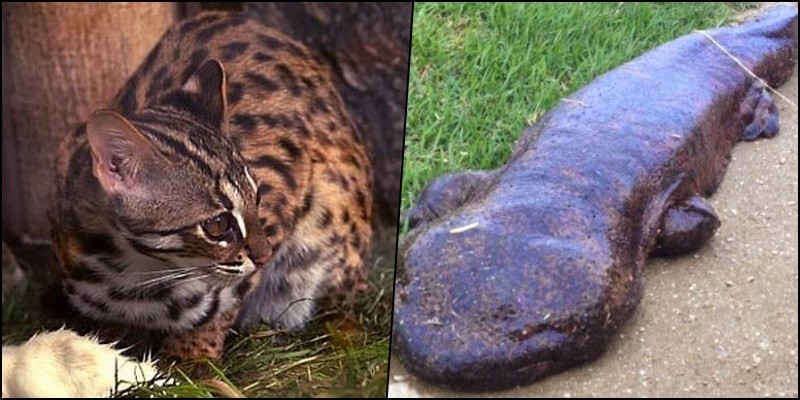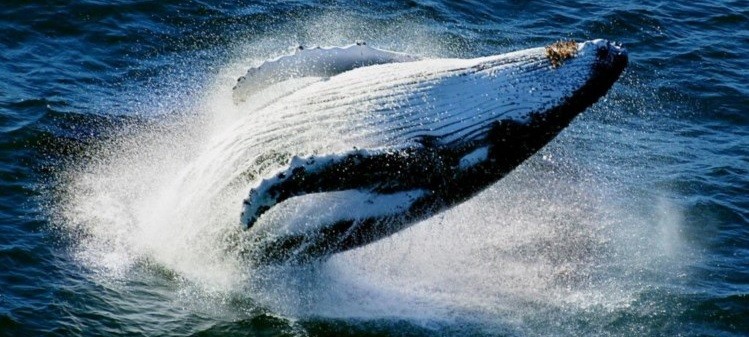Although the first images of Japan refer us to large urban centers such as Tokyo and Osaka, Japan has a diverse fauna and is of great importance to the Japanese people who try to conserve existing species.
Unfortunately, Japan has many species at risk of extinction and in its history there are several species already extinct! Mostly due to human greed, but currently illegal hunting and improper consumption has been declining.
Despite being extinct and endangered, there are about 130 types of land mammals, more than 600 species of birds, about 73 species of reptiles and more than 3,000 different types of fish. Many of these animals are on the brink of extinction and are rarely found outside of Japan. The Japanese fauna deserves to be explored, so we will see 5 animals of the Japanese fauna threatened with extinction.
Índice de Conteúdo
Albatross
You albatrosses are large birds belonging to the family Diomedeidae, being seabirds, which are extremely adapted to life on the high seas, being found on land only in the mating season. They are monogamous, and tend to form large colonies of their species.
They are great swimmers, as they have all toes facing forward and joined by an interdigital membrane that also helps in landing and taking off in the water. Albatrosses have a salt gland which removes excess sodium chloride from the blood, as well as having thermal protections.

Unfortunately in Japan they are threatened with extinction, and this, as bad as it may seem, is a consequence of human causes. According to the Ministry of the Environment, there are around 3,000 short-tailed albatrosses living in Japan. While there are other species such as the black-footed albatross, wandering albatross and Laysan Albatross, only the short-tailed albatross is protected as it is considered an Endangered species.
And the extinction of albatrosses came from human greed. Since the 19th century there has been hunting for albatrosses, because in countries like the United States, albatross feathers were very valuable on the market, in several mass massacres, the population of albatrosses dropped dramatically, with more than 300,000 deaths of the birds.
In 1993, the Ahōdori (as it is known in Japan) has joined the list of rare wild animals, protected by the Law of Conservation of Endangered Species of Wild Fauna and Flora. According to statistics, in 1990, the population of albatrosses was around 1,200 birds. As early as 2010, it is estimated that there were 2,570 albatrosses in Torishima, Izu Peninsula.
Blue Whale
The blue whale is the largest mammal on the planet, weighing in at an incredible 180 tons and reaching a length of between 30 and 35 meters. As everything about it is large, it is not enough to mention its food, since a single adult blue whale can consume almost 4 tons of Krill per day.
Although we can't hear them, the song of blue whales is one of the loudest sounds produced by an animal. They communicate with each other using moans and a series of low-frequency pulses. Under ideal conditions, a blue whale can hear the song of another at distances of up to 1600 km.
Unfortunately, it is threatened with extinction by human poaching, especially in countries like Japan. The decline of the blue whale began more specifically in 1864, when the Norwegian ship Svend Foyn it had been equipped with harpoons specially designed to catch large whales.
Quickly killing the whales came in handy. And in 1925, the United States, the United Kingdom, and Japan joined Norway in the whale hunt. And in just 5 years, 44 ships killed 28,325 blue whales. After the Second World War, the population of blue whales was already scarce and, in 1946, the first laws for the restriction of hunting began to emerge. unfortunately the true The ban only emerged in the 1960s, with more than 350,000 blue whales killed.
And currently the population of blue whales is estimated at three to four thousand. Great blame for the near extinction of this whale is from Japan, being one of the biggest countries specialized in whaling, with allegation, in the present times, that they use them for researches, although many countries and whale protectors question this.
japanese crane
The Japanese mushroom or Tsuru is a species of bird that lives in East Asia and especially in Hokkaido, Japan. They have an estimated life span of about 50 years, and are a very faithful species to their partner, having relationships until death.
They are migratory birds, in spring and summer these animals/these birds live in the Siberia, where the female lays two eggs each year, but only one chick will survive. In the fall, they migrate to the warmer places in Asia (Manchuria, Japan, Korea); they prefer swamps where they can find abundant food (rats, frogs, toads, large insects and also seeds, leaves, and branches).

It is estimated that there are only 1000 of them, with a high risk of extinction, however, with great incentive to preserve the species. The consequence of this comes from illegal hunting and destruction of habitats. Cranes are famous in Japan through legends and origami.
The article is still halfway through, but we recommend also reading:
iriomote-cat
It is a feline unique to Iriomote, a small tropical mountainous island at the southern end of the Ryukyu archipelago. Since its discovery in 1967, it has been considered an endangered animal. This, in turn, is on the decline to extinction due to habitat loss and roadkill deaths. Its population is estimated between 100 to 109 felines of the species.
They are nocturnal cats, able to climb trees and even swim, have a varied diet, feeding on mammals and others. It is considered a wild cat. Discovered in 1965 and mentioned only in 1967, at first it was considered a unique species, but after DNA tests, it is pointed out that the iriomote-cat may be a subspecies of the Southeast Asian Leopard Cat.

Japanese giant salamander
Japanese salamanders are different from the more common salamanders, which can even be confused with small lizards. There is no estimate of how many there are, but researchers say they have a long history in ancient times.
She is the second largest amphibian on the planet, measuring about 1.5 meters, weighing 36 kilos, even though she has a very strange appearance, it is a fact that she is just one of the most curious animals on our planet Earth! O National Geographic reveals that the animal can rip a piece off a human's finger in a matter of seconds.
Even with this power, the salamander is threatened with extinction by man. After being hunted for food, the species is now protected as a national treasure in Japan and efforts are being made to preserve it and reproduce in captivity. Rare, these animals only come out of hiding at night and live in rivers of icy waters close to mountains. – by megacurious








